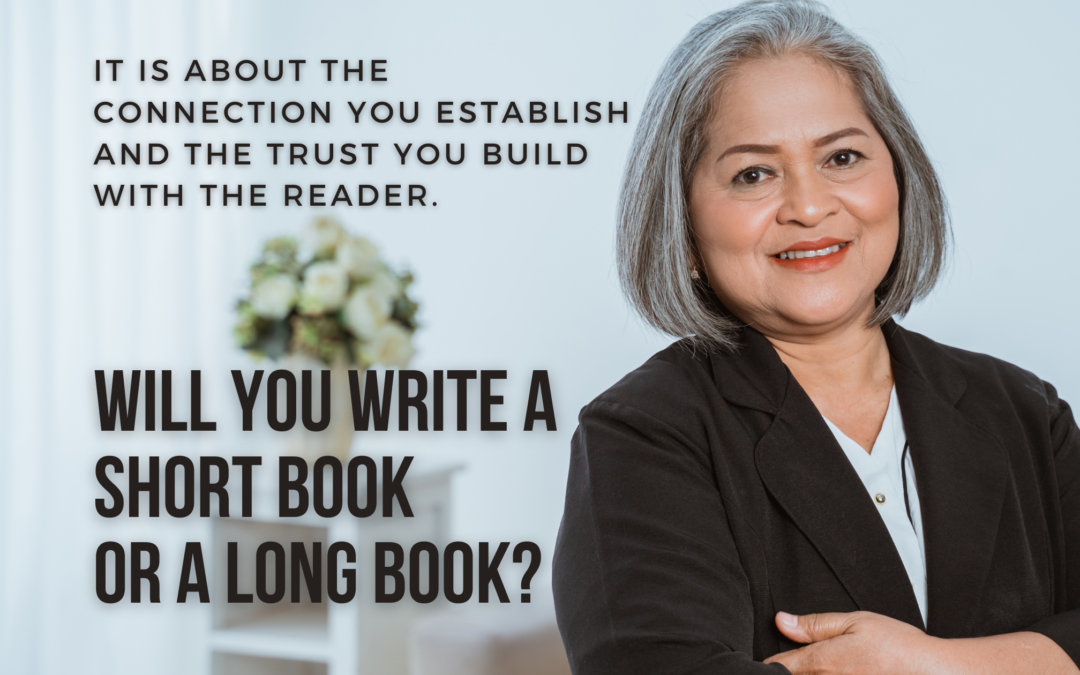In today’s world, information is abundant – you can look up practically anything, find step-by-step guides, processes, insights, and more.
Yet, amidst this sea of data, one thing remains elusive: someone you trust to guide you through a process. This is where a book steps in.
Providing information is only one facet of the book-writing experience. Equally crucial is how you communicate that information and the journey you take the reader on.
It’s about what you lead them toward, the style you employ, and the overall experience you craft. It goes beyond mere facts or information; it’s about the connection you establish and the trust you build with the reader.
Typically, crafting a non-fiction book may not result in substantial profit from sales alone. The real profit lies in leveraging the book to promote another product, service, process, or concept.
If the content of your book serves as a gateway to attract attention and interest in your other endeavours, then being generous with the information in the book becomes a strategic move that aligns with your broader goals.
The multifaceted nature of books
When someone declares, “I’m going to write a book,” it encompasses a myriad of possibilities. The concept of a book, whether short or long, and its place in your business plan, introduces various considerations.
There’s an argument for crafting a book that becomes a reader’s first point of contact with you, designed to ultimately attract clients or raise awareness about your endeavours. Such a book serves a distinct purpose and takes a different form compared to a book positioned later in the process, where customers or clients engage with your services.
Short e-books can create a powerful following around your main message or insight, build your email list of people drawn to that one helpful message, and help you connect with people who may eventually become paying clients & customers.
Longer books can be strategically placed in the middle of your client experience with you, as exemplified by Michael Bungay Stanier’s “The Coaching Habit.” He tailored this concise 33,000-word book as a textbook for his consulting business, utilising it in workshops. The brevity is intentional, serving its role effectively within the customer journey at that stage.
As we progress down the customer retention process, books tend to lengthen. There’s potential for a deeper, thought-provoking book further down in your ecosystem. This kind of book, often perceived as a thought leader’s work, invites readers into your philosophy, thinking, and intricate processes, creating a connection with those willing to invest time in understanding your insights.
A lengthy book possesses a unique power, allowing readers to spend 20 to 30 hours intimately engaged with your ideas – an experience unparalleled by other mediums. A long book positioned deeper into the customer journey serves a different function. However, without careful consideration, if you assume that crafting a thought leader’s book will automatically attract people to your business, you may find the outcome uncertain. Thorough contemplation is essential to understand your audience and tailor your message accordingly.
A short book is saying to the reader, “Let’s have a coffee together so we can get to know a little bit about each other, and during that coffee, my book can help you solve a problem or take action towards making one thing better in your life.”
A longer book is saying to the reader, “Well, let’s go and have a weekend together and dive deep.”
Think about
- Why are you writing this book?
- Who is it for?
- What can it do for them?
- What can it do for you?
- Who do you want the world to see you as when this book comes out?
That person has to show up and write the book.
***
This article is derived from a conversation about books with Bev Ryan, book coach and founder of Smart Women Publish, and Jennie Nash, author, book coach and founder of Author Accelerator.
You can view the full discussion HERE.
Contact Bev to talk about whether a short or long book will suit your purposes, and find out how she can help you with your book and your publishing choices.

